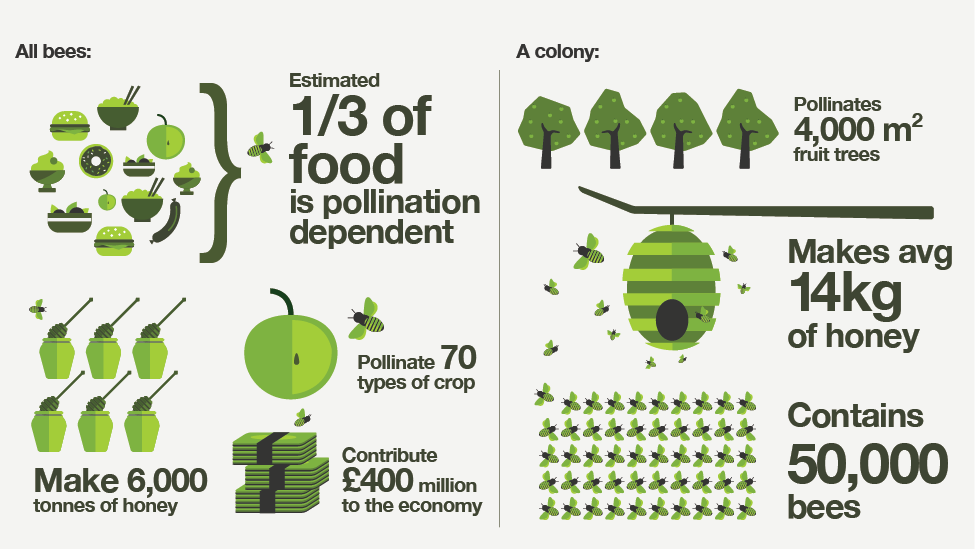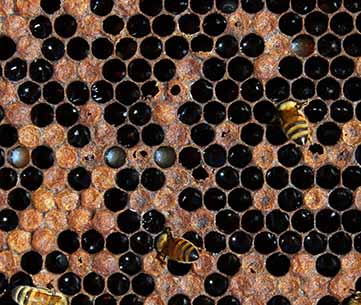 Perhaps we are not so different after all! To protect ourselves against the annual sniffles and coughs, we schedule an appointment and visit the doctor’s office for a flu shot.
Perhaps we are not so different after all! To protect ourselves against the annual sniffles and coughs, we schedule an appointment and visit the doctor’s office for a flu shot.
But what about the honeybees when they are sick? While there are no bee clinics, did you know that there is a vaccine for bees?
Recently, the world’s first vaccine for honeybees has been approved by the US Department of Agriculture (USDA) to combat a deadly bee disease, foulbrood.
Caused by infestations from the bacterium Paenibacillus larvae, foulbrood can kill and weaken the hives. Its first rise was seen in bee colonies during the 1800s and early 1900s as it rapidly spread through colonies of 60,000 bees.
The vaccine was created by the biotech company Dalan Animal Health in Georgia. It provides a new way of addressing animal health and supporting the bee population, which currently faces many challenges to their survival due to the spread of diseases, climate change, and pesticide use.
Why a Vaccine?
 Bees are one of the main insect pollinators, along with butterflies, moths, and wasps. These fuzzy creatures play an extremely essential role in our environment, from maintaining biodiversity in ecosystems to supporting the world’s food system.
Bees are one of the main insect pollinators, along with butterflies, moths, and wasps. These fuzzy creatures play an extremely essential role in our environment, from maintaining biodiversity in ecosystems to supporting the world’s food system.
Countless plant species depend on bees to disperse their pollen, ensuring that they can reproduce, continue to thrive in the environment and provide habitats for other animals.
According to the USDA, “More than 3,500 species of native bees help increase crop yields.” In the United States, bees alone bring in a whopping $15 billion worth of profit in harvests annually. Without the help of bees, it would be much harder to work towards food security or provide all individuals with access to a healthy and nutritious diet.
However, the colonies are at risk. Unpredictable weather patterns caused by climate change, like wildfires, droughts, and storms, pose extreme threats to the populations’ ability to find a suitable environment and survive. Pesticide use can result in chronic bee health issues, and diseases like foulbrood are equally as disruptive.
USDA’s Agricultural Research Service states that foulbrood is “one of the most widespread and the most destructive [diseases].” Because there has been no cure up until now, beekeepers have been relying on temporary antibiotic treatments and destroying and burning any infected colonies.
A Turning Point?
 Fortunately, the development of the honeybee vaccine may prove to be a turning point in protecting the vulnerable bee population.
Fortunately, the development of the honeybee vaccine may prove to be a turning point in protecting the vulnerable bee population.
The vaccine mixes the dead Paenibacillus bacterium larvae with royal jelly, a sugar feed that is fed by worker bees to the queen. Once the queen bee consumes the jelly and acquires immunity, she can then pass it down to the developing bee larvae in her ovaries.
As of now, the vaccine has received conditional approval from the U.S. government, meaning that companies can immediately begin implementing its use in their bee colonies. This form of approval hastens the distribution of the vaccine to meet the urgency of the situation facing honeybees.
If the vaccine proves to be effective, then it may be awarded a regular-use license. More importantly, however, the foulbrood vaccine sparks hope for a brighter future for the bees, one with the potential of more vaccines to fight off honeybee diseases.
Sources: Guardian, NY Times, Smithsonian, UNEP, CNN, USDA









